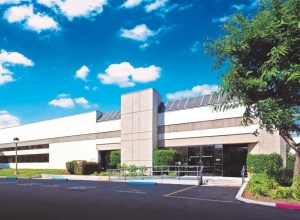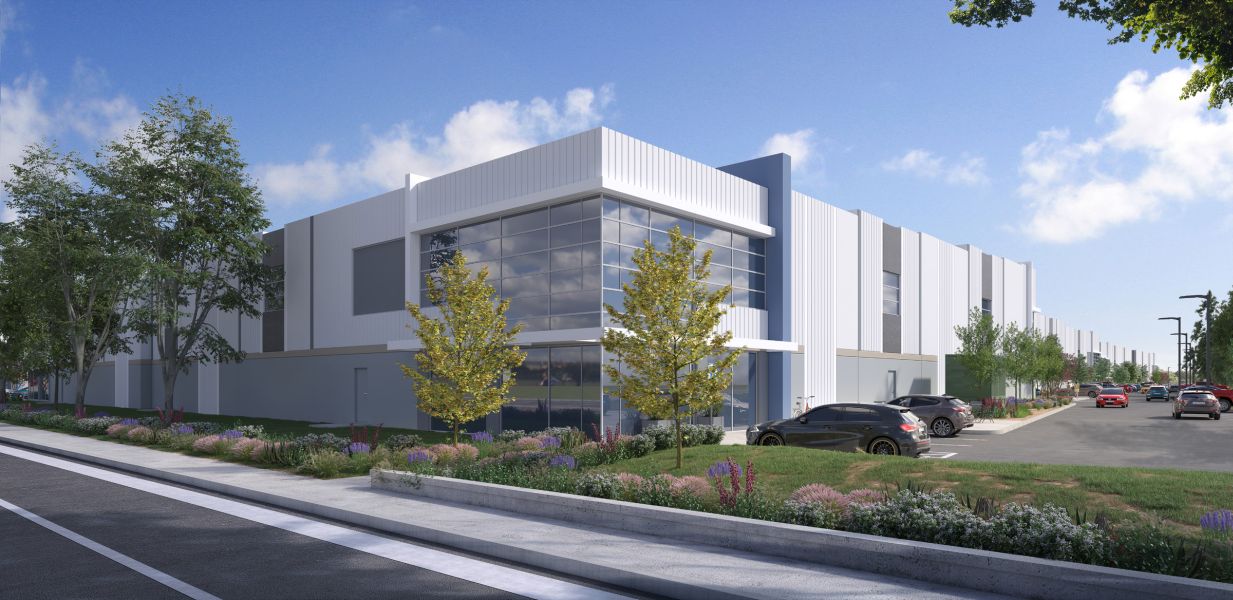Office-to-Logistics Conversions Are Challenging. Here’s Why.
Industry experts weigh in on the scope and feasibility of these projects.
With industrial facilities in record-high demand, it makes perfect sense to take underutilized office properties and turn them into state-of-the-art warehouses.
But don’t expect the trend to be sweeping the country. Only certain office properties in certain locations are viable for such undertakings. And that’s just the short list of criteria.
“A lot of the office conversions we are seeing are of older office buildings or buildings specifically built for a single company,” Nancy Shultz, president of Duke Realty Corp.’s West Region, told Commercial Property Executive. “Releasing these buildings would require enormous amounts of capital to bring them up to modern office space standards—making it more cost-effective to convert to industrial.”
READ ALSO: The Future of Office: Is CRE Out of Touch?
In late 2021, Duke Realty Corp. acquired the two-story office structure at 2727 E. Imperial Highway in Brea, Calif., paying Healthcare Property Advisors approximately $35.4 million for the roughly 105,000-square-foot, Orange County asset. The leading domestic-only, pure-play logistics property REIT has no intention of straying from its core strategy; the company will commence the conversion of the Class B office building into an industrial facility soon after the current tenant’s lease expires.
Goodrich Corp. has leased space at 2727 E. Imperial, originally built in 1984, since 2012, and currently utilizes the facility to house Raytheon Technologies Corp. subsidiary Collins Aerospace. Duke has already submitted a preliminary proposal to the Brea Planning Division for the demolition of the existing structure and the development of an approximately 117,900-square-foot warehouse building.
The size of it
Duke’s Orange County project fits the criteria for a successful conversion as outlined in a recent report by Prologis. Office-to-industrial conversions are pricey endeavors—for starters, the buildings generally have to be demolished, as they don’t lend themselves well to adaptation—so a project has to be sited in a location that can achieve premium rental rates to make economic sense.
Such locations include large coastal markets with high land values and low logistics supply, including Southern California and San Francisco, and on the East Coast, Washington, D.C., and the suburbs of New York City. The overall vacancy in Orange County was just 1.5 percent in the fourth quarter of 2021, according to a report by Cushman & Wakefield, and conditions were even tighter in Brea, Calif., which recorded an overall vacancy rate of just 0.8 percent.
“We’re definitely seeing what we call the ‘covered land play’ in those markets where there are high barriers to supply, most notably in Southern California, in Northern New Jersey—areas where you’re close to the population, you have a voracious tenant appetite for demand, really high replacement cost and no real opportunity to go down to the next exit and develop … you’re effectively supply-constrained,” Jason Tolliver, Cushman & Wakefield’s Americas Logistics & Industrial Investor lead, told CPE.
In Simi Valley, Calif., roughly 40 miles northwest of downtown Los Angeles, Stream Realty and joint venture partner QuadReal Property Group acquired the 275,000-square-foot office property at 1800 Tapo Canyon Drive from Griffin Capital Essential Asset REIT Inc. at the height of the pandemic, and instead of re-tenanting the single-story asset, the partners are now in the midst of redeveloping it as Tapo Canyon Commerce Center, a five-building industrial complex. The approximately 356,300-square-foot park will feature structures ranging in size from roughly 26,000 square feet to 138,000 square feet and will offer parking to accommodate more than 500 vehicles.
READ ALSO: Industrial Capital to Remain Abundant: Q&A With CBRE
On the other side of the country, a 105,000-square-foot office building in New Jersey traded in late 2021 to an unidentified team of “seasoned investors” that are planning a conversion. The property, located on 24 acres at 1001 S. Grand Ave. in Hammonton, was originally developed in 1980 as a light manufacturing and industrial complex. Under the direction of its new owners, it will be converted back to an industrial facility. Simi Valley, part of the North Los Angeles market, had an overall vacancy rate of 1 percent at the end of 2021, and Southern New Jersey’s vacancy rate was just 0.5 percent, according to research from Cushman & Wakefield.
Easier said than done
Transforming an office property into an industrial facility is much more than a cosmetic makeover, so selecting an office asset for conversion involves a long list of considerations. More often than not, office-to-industrial conversions are office-to-industrial redevelopments. In other words, these projects usually call for demolitions. However, one of the biggest challenges involved in the pursuit of office-to-industrial conversions can involve regulatory resistance, starting with obtaining rezoning permission. “It isn’t easy to get a property rezoned, so underlying industrial use zoning is key,” Schultz said.
And then there is the implied loss of white-collar jobs with the replacement of an office property with an industrial asset, as noted in the Prologis report. However, there is some misconception on this point. “The supply chain industry has become a very sophisticated operation and there are plenty of exciting, well-paying careers that start in a warehouse,” added Schultz. “An example is the prevalence of engineers hired into the industrial and logistics industries that work on warehouse automation.”
While proximity to an ample labor pool is of just as high consideration to industrial occupants as it is to office occupants, proximity to transportation infrastructure is a much higher priority for industrial tenants, as noted in the Prologis report.
“The one thing that I would say, which is true of both retail-to-logistics conversions and office-to-industrial conversions is they require a really deep knowledge of that particular asset and the market and submarket that it’s in,” Tolliver said. “These are very specific based upon the local nuances in the market, so really having a deep knowledge of the particular asset becomes much more important to mitigate risk and to identify the upside long-term potential than what the covered land play would offer.”
Localized trend
New office-to-industrial conversion projects will continue to pop up in certain high-demand markets for the foreseeable future, but there’s no danger of office corridors tumbling to the logistics sector in waves across the country. There are only a few markets in the U.S. that have both the fundamentals and the supply and demand balance to turn such projects into a meaningful investment play, according to Tolliver.
Prologis concurs; the trend has limited viability. “Our analysis has found that the trend of converting office properties into logistics facilities will be minimal, given physical, regulatory and economic challenges. This points to how creative developers must be in sourcing industrial land since it’s getting harder to find, especially where it’s most needed,” Melinda McLaughlin, global head of research with Prologis, told CPE.
Even if the fundamentals and demand called for office-to-industrial conversions in every market across the U.S., space would not allow for it. Logistics properties typically require a minimum of 8 acres and only 27,000 office buildings, the equivalent of 1.2 billion square feet in ground floor real estate, meet the requirements, as Prologis notes in its report.
READ ALSO: Industrial Lease Trends to Consider in 2022
Even in markets where office-to-industrial conversions are feasible, if not warranted, conversion projects may face yet another obstacle.
“I wouldn’t etch the death of the office on the tombstone just quite yet,” Tolliver said.
“Fundamentals continue to improve quarter over quarter and month over month. The office plays an indispensable role for companies and corporations in creating a culture. That doesn’t mean you have to be there five days a week for eight hours a day, but you have to have a place where people can congregate to share ideas, to develop a sense of what it is and who it is that they are as an organization and that remains mission-critical for companies of all sizes. So, I think what we’re seeing is a greater flexibility in the use of office and all of the different types of workplace experiences that flow from that. But I do not anticipate, nor am I seeing this wholesale ‘We’re never going to go to the office again; we don’t need this space,’” Tolliver concluded.









You must be logged in to post a comment.